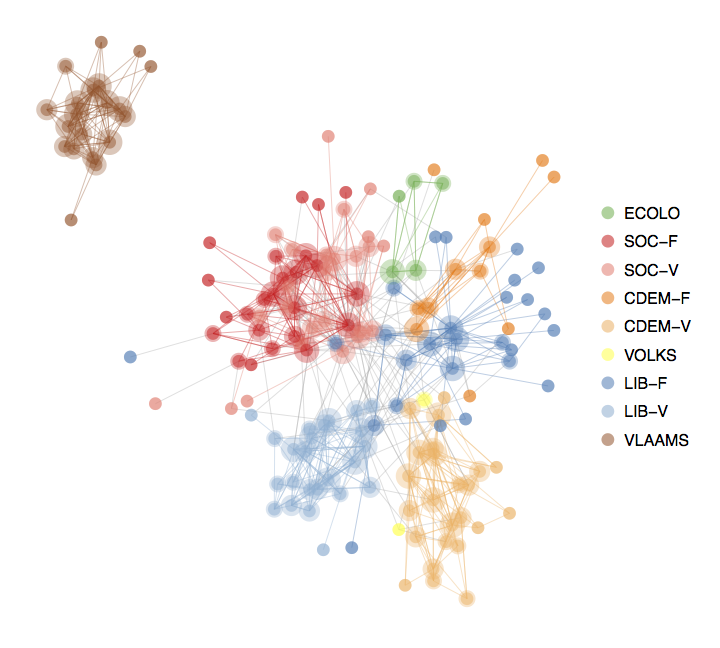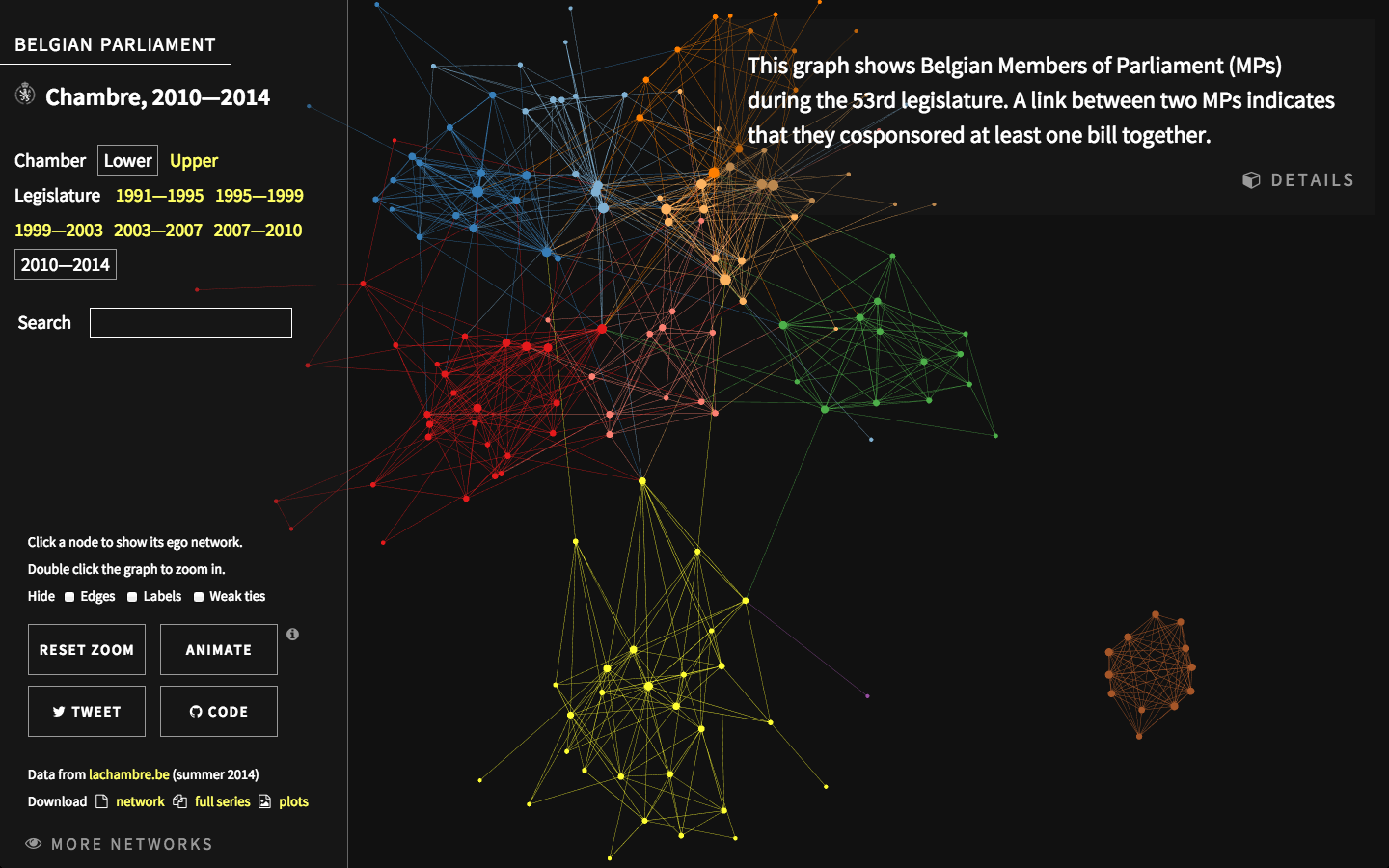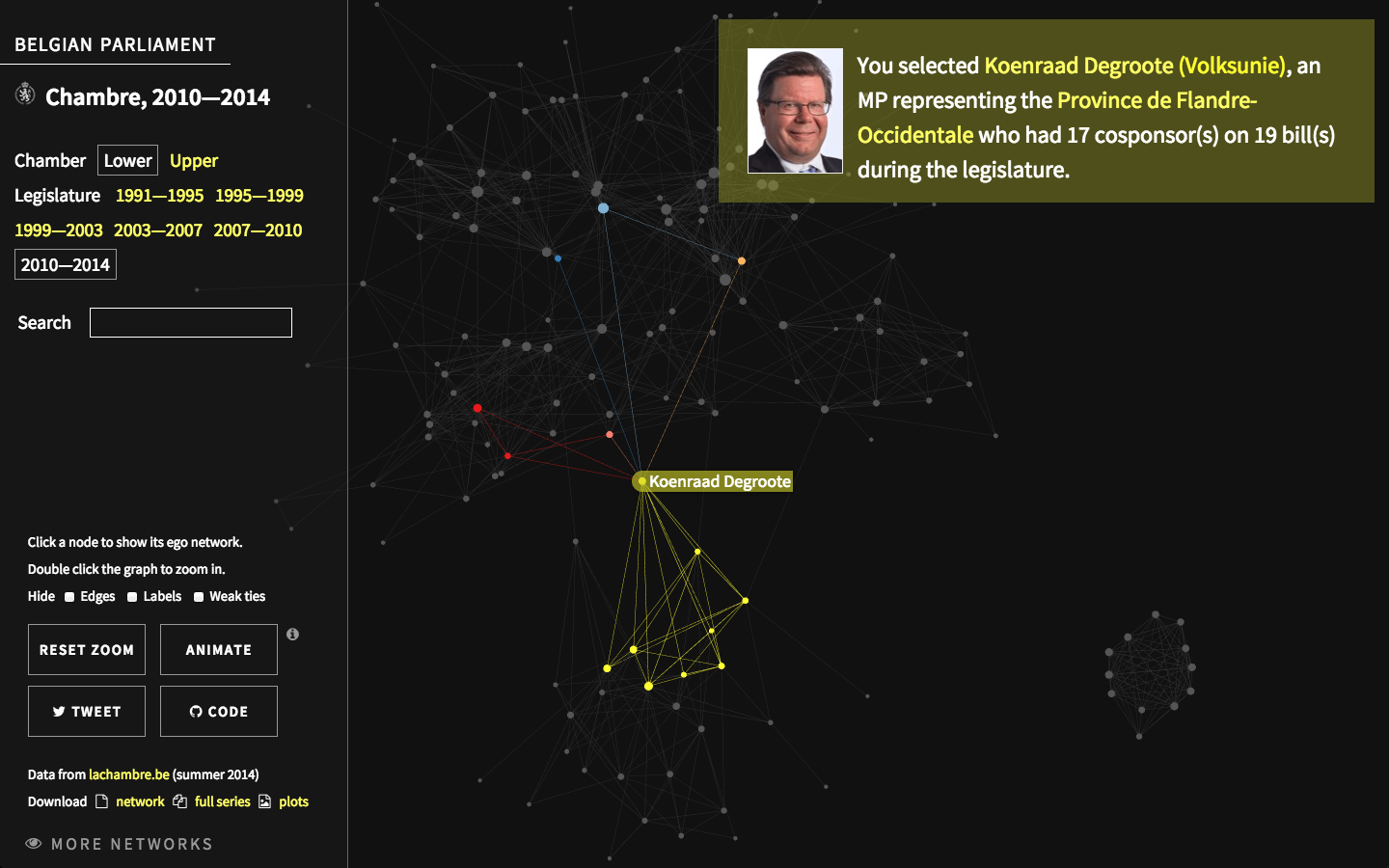A few years back, Kamil Gregor published a post under the title “Visualizing politics: Network analysis of bill sponsors”. His post, which focused on the lower chamber of the Czech Parliament, showed how basic social network analysis can support the exploration of parliamentary work, by revealing the ties that members of parliament create between each other through the co-sponsorship of private bills.
As Kamil observed, this kind of research is heavily dependent on open legislative data, which does not exist for many parliaments. There has been, however, some amount of progress in that area – and even when parliaments do not develop open data portals, they often maintain quite detailed official websites.
In what follows, I would like to quickly report on a small research project that I have developed over the years, under the name “parlnet”.
Legislative data on bill co-sponsorship
This project looks at bill co-sponsorship networks in European countries. Many parliaments allow their members to co-sponsor each other’s private bills, which makes it possible to represent these parliaments as collaborative networks, where a tie exists between two MPs if they have co-sponsored legislation together.
This idea is not new: it was pioneered by James Fowler in the United States, and has been the subject of extensive research in American politics, both on the U.S. Congress and on state legislatures. Similar research also exists on the bill co-sponsorship networks of parliaments in Argentina, Chile andRomania.
Inspired by this research and by Baptiste Coulmont’s visualisation of the French lower chamber, I surveyed the parliamentary websites of the following countries:
- all 28 current members of the European Union ;
- 4 members of the EFTA: Iceland, Liechtenstein, Norway, and Switzerland
This search returned 19 parliamentary chambers from 15 countries for which it was (relatively) easy to extract legislative data, either through open data portals like data.riksdagen.se in Sweden ordata.stortinget.no in Norway, or from official parliamentary websites directly.
From legislative data to network graph
After splitting the data into legislative periods separated by nationwide elections, I was able to draw a large collection of networks showing bill co-sponsorship in these 19 chambers. Here, for instance, is the network for the Belgian lower chamber during its 51st legislature (years 2003-2007):

In this graph, each point (or node) is a Belgian MP, and each tie between two MPs indicates that they have co-sponsored at least one bill together. The colors and abbreviations used in the graph are party-related codes, which combine information on the parliamentary group and linguistic community of each MP.
Because this kind of graph can be interesting to explore in more detail, I have also built interactive visualizations out of them, in order to show more detailed information on the MPs who participate in bill cosposorship:

These visualizations are interactive insofar as the user can animate the networks, or browse through its members to learn more information on them:

I have been able to build the same networks and interactive visualizations for the following countries:
- Austria (lower/national chamber only)
- Belgium (both chambers)
- Bulgaria
- Czech Republic
- Denmark
- Finland
- France (both chambers)
- Hungary
- Iceland
- Italy (both chambers)
- Lithuania
- Norway
- Romania (both chambers)
- Sweden
- Switzerland (lower/national chamber only)
In parallel to this project, I have also built similar networks for the European Parliament and for theTunisian Constituent Assembly.
Further research opportunities
The parlnet project was coded in R, and its code is public so that it might benefit from external contributions. The list of countries and chambers that it covers is not exhaustive: in some cases like Portugal, I simply failed to retrieve the data. More talented coders might therefore be able to add to the current database.
Bill cosponsorship networks illustrate how open legislative data provided by parliaments can be turned into interactive tools that easily convey some information about parliamentary work, including, but not limited to:
- the role of parliamentary party leaders in managing the legislation produced by their groups
- the impact of partisan discipline and ideology on legislative collaboration between MPs
- the extent of cross-party cooperation in various parliamentary environments and chambers
As I intend to follow up on these research themes in the future, any feedback on the current state of the code would be tremendously helpful.
François Briatte is a PhD candidate at the Institute of Political Studies in Grenoble, and an assistant lecturer at the European School of Political Sciences in Lille.